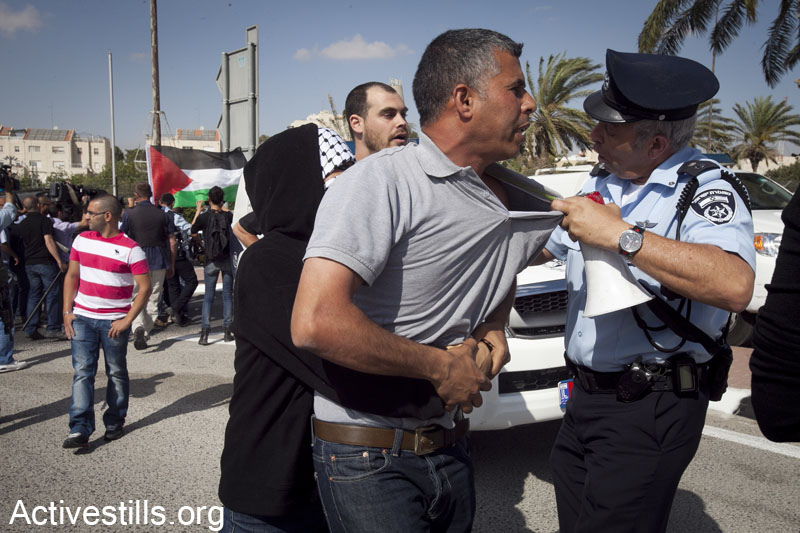Category: In the Media
-
Activists seal off settlement in solidarity with hunger strikers
13 May 2012 | Popular Struggle Coordination Committee Protesters blocked the entrance to the Ma’ale Adumim settlement, meters away from one of Israel’s main interrogation centers in the West Bank. Two protesters were arrested. 50 Palestinian, Israeli and international activists blocked the entrance of the Ma’ale Adumim settlement today, in support of the Palestinian prisoners’…
-
Thaer Halahleh: “My Beloved Lamar…Forgive me”
13 May 2012 “My Beloved Lamar, forgive me because the occupation took me away from you, and took away from me the pleasure of witnessing my firstborn child that I have always prayed to God to see, to kiss, to be happy with. It is not your fault; this is our destiny as Palestinian people…
-
A letter from Khader Adnan: “Their fate is in our hands”
by Khader Adnan 30 April 2012 | Popular Struggle Coordination Committee In the name of Allah, Most Compassionate, Most Merciful, Praise be to Allah, and peace and blessings be upon the Messenger of Allah. Dear free people of the world. Dear oppressed and disenfranchised around the globe. Dear friends of our people, who stood with…

